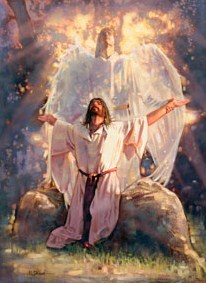


In Oveido Spain in Oct. 2000 scientists decided that the Shroud of Turin must be authentic after all. This decision came after examining another ancient artifact- an obscure relic called the Sudarium of Oveido-reportedly the other burial cloth of Christ's reported in the Gospel of John. This burial face cloth has a dramatic history involving the Knights Templar, Moors, El Cid and and has been in Spain since 631 AD and traceable to the time of the crucifixion of Christ. The evidence based on facial impression,blood stains & type,pollen,and other forensic evidence are that the cloth covered the face of the same tortured man as the one in the image on the Shroud (only removed before burial). If that's the case..how can the Shroud be from the 13th Century?

Italian study claims Turin Shroud is Christ's authentic burial robe
Just days before Christmas, a new study has emerged that suggests that one of Christianity's most prized but mysterious relics – the Turin Shroud – is not a medieval forgery but could be the authentic burial robe of Christ.By Nick Squires-The Telegraph(UK), Rome 9:00PM GMT 19 Dec 2011.
Italian scientists have conducted a series of advanced experiments which, they claim, show that the marks on the shroud – purportedly left by the imprint of Christ's body – could not possibly have been faked with technology that was available in the medieval period. The research will be an early Christmas present for shroud believers, but is likely to be greeted with scepticism by those who doubt that the sepia-coloured, 14ft-long cloth dates from Christ's crucifixion 2,000 years ago.
Sceptics have long claimed that the shroud is a medieval forgery, and radiocarbon testing conducted by laboratories in Oxford, Zurich and Arizona in 1988 appeared to back up the theory, suggesting that it dated from between 1260 and 1390. But those tests were in turn disputed on the basis that they were skewed by contamination by fibres from cloth that was used to repair the relic when it was damaged by fire in the Middle Ages.
The new study is the latest intriguing piece of a puzzle which has baffled scientists for centuries and spawned an entire industry of research, books and documentaries.
"The double image (front and back) of a scourged and crucified man, barely visible on the linen cloth of the Shroud of Turin, has many physical and chemical characteristics that are so particular that the staining ... is impossible to obtain in a laboratory," concluded experts from Italy's National Agency for New Technologies, Energy and Sustainable Development.
The scientists set out to "identify the physical and chemical processes capable of generating a colour similar to that of the image on the Shroud." They concluded that the exact shade, texture and depth of the imprints on the cloth could only be produced with the aid of ultraviolet lasers – technology that was clearly not available in medieval times.
The scientists used extremely brief pulses of ultraviolet light to replicate the kind of marks found on the burial cloth. They concluded that the iconic image of the bearded man must therefore have been created by "some form of electromagnetic energy (such as a flash of light at short wavelength)." Although they stopped short of offering a non-scientific explanation for the phenomenon, their findings will be embraced by those who believe that the marks on the shroud were miraculously created at the moment of Christ's Resurrection.
"We are not at the conclusion, we are composing pieces of a fascinating and complex scientific puzzle," the team wrote in their report. Prof Paolo Di Lazzaro, the head of the team, said: "When one talks about a flash of light being able to colour a piece of linen in the same way as the shroud, discussion inevitably touches on things like miracles and resurrection." "But as scientists, we were concerned only with verifiable scientific processes. We hope our results can open up a philosophical and theological debate but we will leave the conclusions to the experts, and ultimately to the conscience of individuals."
The research, conducted in laboratories in Frascati, a town outside Rome famous for its white wine, backs up the outcome of tests by a group of 31 American scientists between 1978 and 1981. The Americans – who called themselves the Shroud of Turin Research Project or STURP – conducted 120 hours of X-rays and ultraviolet light tests on the linen cloth. They concluded that the marks were not made by paints, pigments or dyes and that the image was not "the product of an artist", but that at the same time it could not be explained by modern science. "There are no chemical or physical methods known which can account for the totality of the image, nor can any combination of physical, chemical, biological or medical circumstances explain the image adequately." The US team – which included nuclear physicists, thermal chemists, biophysicists and forensic pathologists – concluded: "The image is an ongoing mystery."
One of Christianity's greatest objects of veneration, the shroud appears to show the imprint of a man with long hair and a beard whose body bears wounds consistent with having been crucified. Each year it lures millions of pilgrims to Turin Cathedral, where it is kept in a specially designed, climate-controlled case. Scientists have never been able to explain how the image of a man's body, complete with nail wounds to his wrists and feet, pinpricks from thorns around his forehead and a spear wound to his chest, could have formed on the cloth. The Vatican has never said whether it believes the shroud to be authentic or not, although Pope Benedict XVI has said that the enigmatic image imprinted on the cloth "reminds us always" of Christ's suffering.